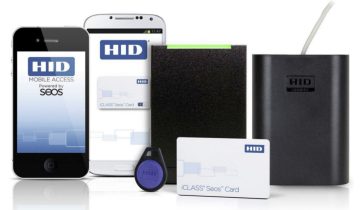RFID (Radio-Frequency Identification) technology operates at various frequencies, and several RFID frequency bands are available in the market. Each frequency has its own characteristics, advantages, and best-use cases. As of my last knowledge update in September 2021, here are the main RFID frequency bands used in the market:
- Low-Frequency (LF) RFID:
- Frequency Range: 125 kHz
- Common LF RFID Standards: ISO 18000-2 (LF), ISO 14223 (HID Prox)
- Typical Read Range: Short (a few inches to a few feet)
- Applications: Access control, asset tracking, animal identification, key fobs
- High-Frequency (HF) RFID:
- Frequency Range: 13.56 MHz
- Common HF RFID Standards: ISO 14443 (NFC), ISO 15693
- Typical Read Range: Short to Mid-range (a few inches to about 3 feet)
- Applications: Contactless payment cards, smart cards, library book tracking, NFC-enabled devices
- Ultra-High-Frequency (UHF) RFID:
- Frequency Range: 860-960 MHz (varies by region)
- Common UHF RFID Standards: EPC Gen2 (UHF), ISO 18000-6C
- Typical Read Range: Long-range (several feet to over 30 feet)
- Applications: Inventory management, supply chain, retail, logistics, toll collection
- Microwave RFID:
- Frequency Range: Typically 2.45 GHz or 5.8 GHz
- Common Microwave RFID Standards: Not as standardized as LF, HF, or UHF
- Typical Read Range: Short to Mid-range (similar to HF)
- Applications: Microwave RFID technology is less common and often used for specialized applications like industrial automation and some vehicle identification systems.
- Active RFID:
- Frequency Range: Varies, but commonly 433 MHz, 868 MHz, or 2.4 GHz
- Common Active RFID Standards: Various proprietary standards
- Typical Read Range: Extended range (up to several hundred meters)
- Applications: Real-time location tracking, asset monitoring, vehicle tracking, and other applications requiring longer read ranges and continuous tracking.
- Near Field Communication (NFC):
- Frequency Range: 13.56 MHz (HF)
- Common NFC Standards: ISO 14443, ISO 18092
- Typical Read Range: Very short-range (a few centimeters)
- Applications: Contactless payments, mobile phone pairing, access control, data exchange between devices
The choice of RFID frequency depends on factors such as the required read range, application-specific needs, regional regulations, and compatibility with existing infrastructure. Each frequency band has its strengths and weaknesses, making it suitable for different use cases. It’s important to consider these factors when selecting the appropriate RFID technology for a specific application.






